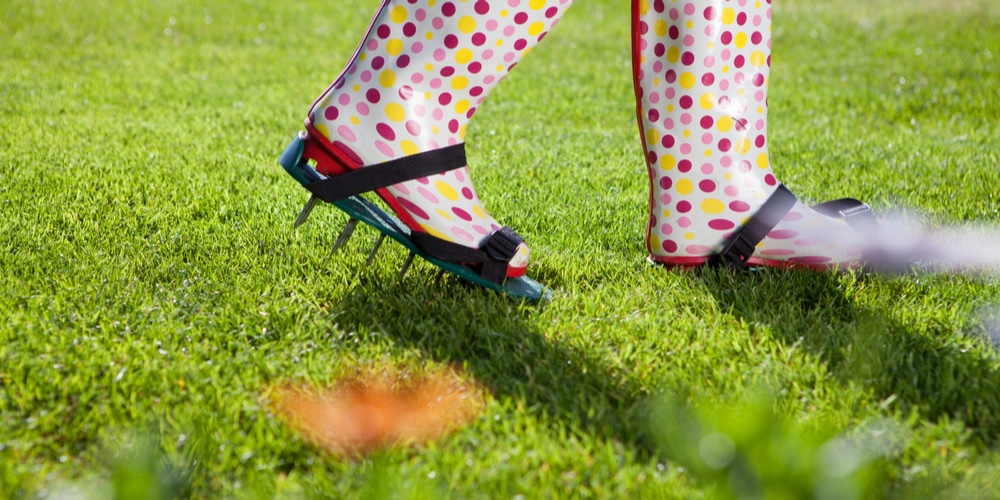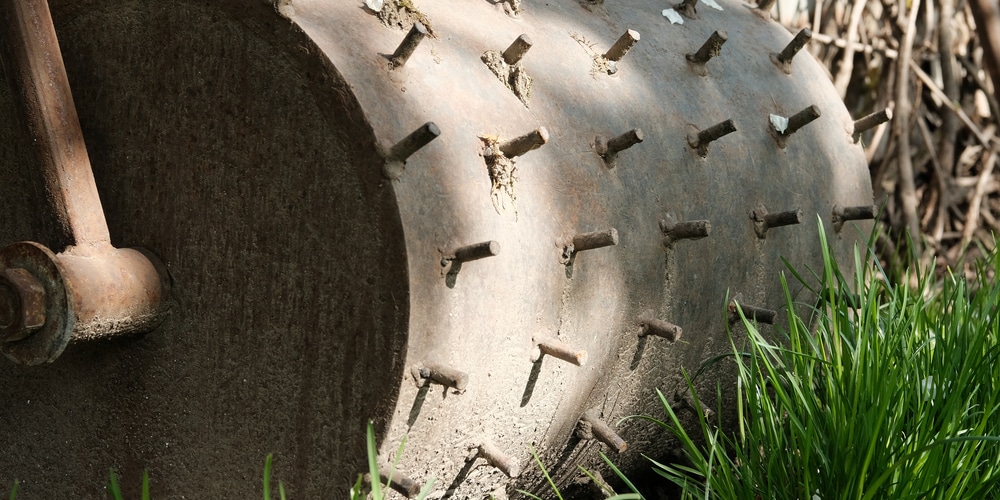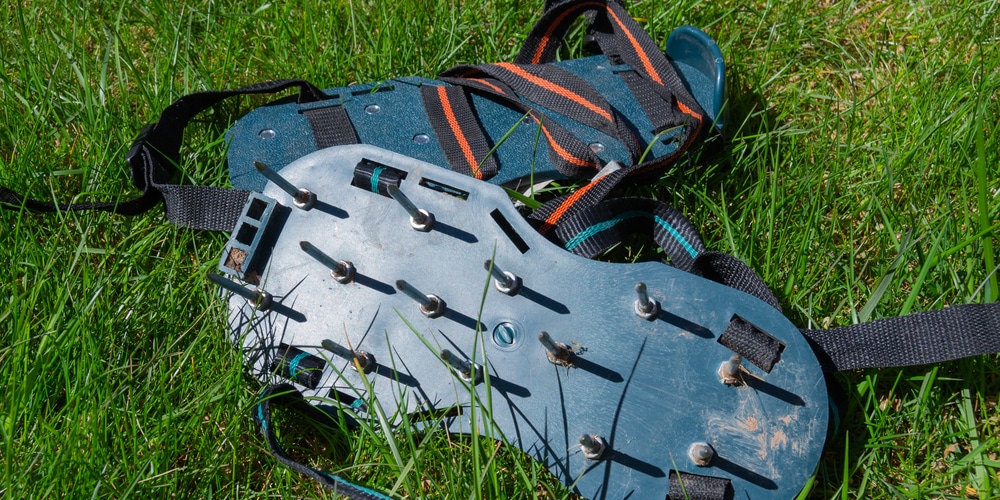The impact of air inside the soil is massive. As you probably know, water in the soil is necessary. But you cannot have all the pore spaces filled with water: you need gas down there. In detail, plant roots need oxygen. So, most gardeners use aeration tools to improve soil gas exchange.
Do spike aerators work? When most people think about spike aerators, they usually picture a pitchfork or a machine that pierces and loosens turf like golf courses or sports fields. Both versions work when properly used. Spike aerators help beneficial microbes decompose organic matter. Plus, they make plant roots breathe better. Last but not least, they also provide oxygen to worms, which produce more worm castings.
How Do Spike Aerators Work?
Spike aerators put holes in the ground. But unlike plug aerators, which remove turf pieces, these gardening tools punch holes in the soil by thrusting sharp tines below the lawn surface. And the spikes you use to poke holes make all the difference.
When the tines go deep enough, they can wiggle and loosen up soil compaction. Without this crucial step, the simple piercing of the soil produces short-term benefits and may not help prevent poor soil structure.
This concept also explains why using a pitchfork is only effective when you push the spikes down with your foot—penetrating more than 3 inches if possible—and then wiggle the handle. In other words, the goal is to create fissures and soften the soil.
When used correctly, not only do spike aerators work, but they also save you time. Why? Because other aerator options include clean-up and the refilling of the soil.
Spike Aeration Done Right
Punching holes in your lawn can allow more nutrient absorption and better gas exchange. But at the same time, it can create more soil compaction.
Soils with more calcium and clay than organic matter cause soil particles to stick together in clumps, acting like magnets. As a result, such compacted soil does not retain water and air well. To be precise, high bulk density soil cannot hold both water and oxygen at the same time.
When you use spike aerators on these areas, the result is just a quick fix. Soon, it will compact again, especially when it fills up with the rain. So, you can either follow a regular aeration schedule or amend the soil.
The good news is that you do not need to aerate every part of your lawn. In fact, aeration is only necessary for those compacted areas that show signs of water stagnation or heavy foot traffic. Of course, sports stadium owners prefer not to destroy, refill, and reseed their turf after every game. So, this is why you will only see spike aerators on sports fields following a rigorous maintenance schedule.
What time of the year should you spike aerate your lawn? Apart from aerating after rainfall, which you should never do, the best time for aerating your turf depends on several factors. But the easy answer is to check your local university agricultural extension office. You will find tables and maintenance calendars for your specific grass type that suggest the best time to perform maintenance tasks like spike aeration.
Avoiding Common Pitfalls Of Spike Aeration + Tips
Never do spike aerators work when you misuse them. By the same token, aerating your lawn while your grass is dormant may cause irreversible root damage. On the bright side, you can aerate before or after a pre-emergent treatment to control weeds.
Various gardeners have different ways to keep their lawns green and lush. So, feel free to experiment with varying maintenance schedules and solutions. For example, some gardeners use both spike and plug aerators. Usually, they use plug aerators on their lawns once a year, fill the holes with sand, and spike aerate for the rest of the growing season. As long as you avoid the most common mistakes, experimenting is fun.
Mechanical spike aerators come with different spikes. In general:
- Hollow tines are ideals for more compacted soils.
- Slitting tines help you scarify the lawn and remove thick layers of thatch, giving your grass room to breathe. Also, you can use them on a lower setting before you overseed to create ridges and grooves for the seed to sit in.
- Solid tines are better for low-traffic loamy soil.
Do Spike Aerators Work?: Conclusion
If you have soil compaction issues, water your lawn regularly. Also, consider switching to animal manure to add more organic matter. Or using biostimulants and humic acid to help your turf stay healthy. Then use a spike aerator to help improve the air circulation.


